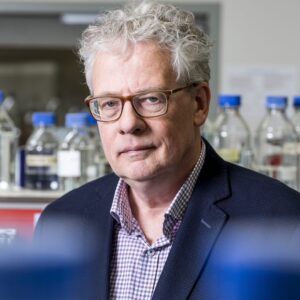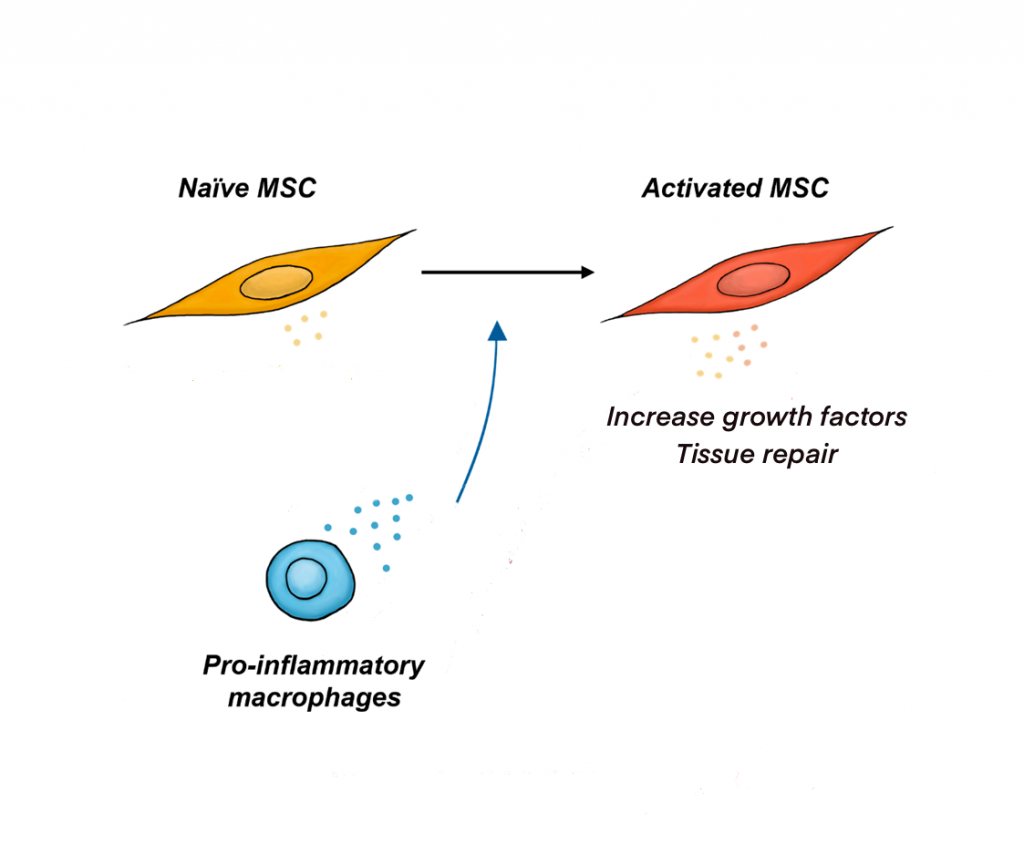
Cells work together to repair spinal cord injury
14 October 2022

14 October 2022
Traumatic spinal cord injury is an incurable condition with permanent loss of function, which can lead to permanent paralysis. Neuroscientist Ines Maldonado-Lasuncion investigated different methods of cell transplantation, using rat models of spinal cord injury to better understand the cells that we aim to use as therapies for spinal cord injury.
Maldonado-Lasuncion uses mesenchymal stromal cells (MSC) for transplantation into the spinal cord. MSC are special cells that can be isolated from, for example, bone marrow, adipose tissue or the umbilical cord. These cells can migrate to damaged tissues and release molecules that help with repair. It appears that MSC interact with macrophages at the spinal cord injury site. Macrophages are white blood cells that have the ability to ‘eat’ other cells and in this way remove harmful substances or bacteria from the body. MSC can reciprocally interact with macrophages to coordinate spinal cord repair.
MSC have previously been used as a transplant to treat spinal cord injury due to their ability to secrete recovering molecules. Until now, however, the results have been unsatisfactory. By investigating the molecular mechanisms of the MSC, their interaction with other cells and the environment that they are transplanted into, we can gain insights to optimize of MSC transplantation and Improve their therapeutic effect. Maldonado-Lasuncion specifically focused on the interaction between MSC and macrophages in a laboratory setting, both in live cell cultures and animal models for spinal cord injuries.
MSC and macrophages communicate with each other through secreted molecules. The results show that macrophages in different polarization states stimulate MSC in different ways. It turned out that the molecules of pro-inflammatory macrophages cause MSC to secrete large amounts of growth factors. These growth factors help protect nerve tissue repair, but it also makes MSCs more vulnerable by decreasing the expression of their survival genes. Furthermore, results showed that co-transplantation of MSC with a specially developed hydrogel might be a successful intervention to reduce spinal cord wound size.

On October 19 from 13:45 – 15:15 Ines Maldonado-Lasuncion’s PhD defense will take place at the Aula of the VU University.

The Friends Foundation facilitates groundbreaking brain research. You can help us with that.
Support our work